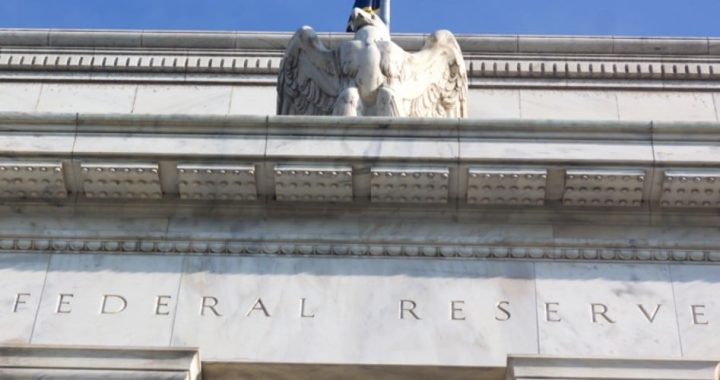
Headlines from major financial sources virtually shouted that the Federal Reserve was suddenly employing “QE4” — quantitative easing — in a massive way to calm the bond markets roiled by the coronavirus. The Wall Street Journal declared: “Fed to Inject $1.5 Trillion” into the bond market while CNN shouted: “NY Fed to pump in $1.5 trillion to fight coronavirus-linked ‘highly unusual disruptions’ on Wall Street.”
London’s Financial Times, usually an island of calm in an ocean of panic, said that virus fears “prompted the US Federal Reserve to announce a sweeping package of measures … including pumping trillions of dollars into the financial system.” CNBC announced that “the new moves pump in up to $1.5 trillion into the system in an effort to combat potential freezes brought on by the coronavirus.” The Fed would do this, said CNBC, by “dramatically ramping up asset purchases amid the turmoil created by the coronavirus.”
The articles behind the headlines reflected the panic felt elsewhere over the coronavirus. Said the Journal, “Flooding the Treasury markets with cash … [is] the right call … [with the Fed] add[ing] $500 billion [to its] repo operations.” The Times added: “The Fed … ramp[ed] up the amount of cash it will inject into the repo market … to ensure funding markets are functioning,” adding ominously, “Analysts and investors fear that an unwinding of these strategies could ricochet through the entire global financial system.”
The Journal soared into the hyperatmosphere with its declaration that “the Fed’s promise to intervene substantially in short-term money markets … opens the door to a resumption of bond buying stimulus known as quantitative easing.”
It’s all bunk. The headline writers are suffering from the same faux-panic infecting the rest of the country over the reported exponential spread of the allegedly wicked and deadly COVID19/coronavirus.
A careful reading of the Fed’s announcement reveals that it is doing nothing more than offering its financial assistance if needed to those banks and financial institutions operating in the tiny segment of the bond market dealing in repurchase (repo) agreements. Said the New York Fed on Thursday: “Today, March 12, 2020, the [Open Market Trading] Desk will offer $500 billion in a three-month repo operation at 1:30pm ET that will settle on March 13, 2020. Tomorrow, the Desk will further offer $500 billion in a three-month repo operation and $500 billion in a one-month repo operation…. [These] will be offered on a weekly basis for the remainder of the month.”
Translation: The Fed is offering its lending capacity to those banks and other financial institutions operating in the repurchase market if they feel the need.
In the repo market, one financial institution temporarily trades securities to another institution in exchange for cash, with the understanding that it will repurchase those securities the next day. Large banks have large needs for cash and often need access to quick cash to conduct their regular daily operations. Often the most practical way to raise that cash is through repurchase agreements.
When markets are volatile, even highly solvent institutions may not be able to fund those daily operations on their own, and so they use the repo market to supply those funds. Sometimes the Fed offers to help in the process, lending the needed cash to banks overnight as an alternative.
Most of the Fed’s first offer was left on the table. Of the initial $500 billion offered by the Fed, those banks and financial institutions operating in the repo market took advantage of just $78 billion of it.
As Daniel Tenreiro, a writer for National Review not smitten with the coronavirus panic, calmly said, “No, the Fed is not cutting a check to banks.”
He added: “In the interest of correcting any misunderstanding, dear reader, I have decided to remain in Manhattan instead of buying canned foods and [heading] to the countryside.”
Headlines reflecting the panic spreading elsewhere failed to reflect the reality and vastly overstated what the Fed is really doing.
Image: amedved via iStock / Getty Images Plus
An Ivy League graduate and former investment advisor, Bob is a regular contributor to The New American, writing primarily on economics and politics. He can be reached at [email protected].



